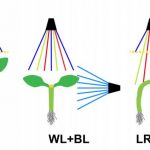Recognizing Plant Physiology authors: Jinghong Zhang
 Jinghong Zhang, first author of The PPR-SMR protein ATP4 is required for editing the chloroplast rps8 mRNA in rice and maize
Jinghong Zhang, first author of The PPR-SMR protein ATP4 is required for editing the chloroplast rps8 mRNA in rice and maize
Current Position: Ph. D. candidate, National Key Laboratory of Crop Genetic Improvement, Huazhong Agricultural University, China
Education: Ph. D. in Huazhong Agricultural University; B. S. in Huazhong Agricultural University; B. Phil. in Huazhong University of Science & Technology
Non-scientific Interests: biking, hiking, volleyball, philosophy
Brief bio: I have been interested in plant science and human thoughts since high school. So, I selected biology as my main major and philosophy as my second major at university. As an undergraduate, I was attracted by chloroplast that conduct photosynthesis. Therefore, I chose to join the lab of Dr. Fei Zhou to study chloroplast gene regulation as my Ph. D. program. My first finding of this study is the rice atp4 mutant had fewer tillers than the wild type, which had not been reported in previous studies. However, I felt a little bit frustrated at first, as ATP4 is a well studied P-type pentatricopeptide repeat (PPR) protein in Arabidopsis and maize, and I found that the molecular defects in osatp4 are very similar to those reported previously in maize, including defects in accumulation of the ATP synthase and in the stability of dicistronic rpl16-rpl14 transcripts. It might be hard to make a breakthrough on this study. Luckily, once I unintentionally planted the osatp4 mutant in the field at a relatively late time (almost in autumn, not a suitable time for rice growth). Unexpectedly, all the osatp4 mutant plants exhibited a pale-green phenotype. Based on this observation, we further proved that the osatp4 mutant is cold sensitive. Another surprising finding is that the P-type PPR protein ATP4 is required for the mRNA editing of chloroplast rps8 in rice and maize. More importantly, we proved that the defect in the editing of rps8 transcript is not just a secondary effect due to the defect in the accumulation of rpl16–rpl14, which is cotranscribed with rps8. For this, I would like to acknowledge the scholarship granted by HZAU and Professor Alice Barkan for taking me as an exchange student in the University of Oregon. Prof. Barkan’s lab study the mechanisms employed by the PPR family and they investigated lots of maize PPR mutants. She kindly provided us with zmpgr3 and zmatp4. This work is of wide interest, because it sheds new light on the unanticipated role of PPR-SMR protein in RNA editing, highlights the importance of RNA editing under cold stress conditions; besides, the mechanism we proposed may also be applied to other PPR-SMR proteins.
姓名: 张景虹
当前职位: 博士在读
学历:生物化学与分子生物学博士,华中农业大学;
生物技术学士,华中农业大学;
哲学学士(第二学位),华中科技大学
非科学兴趣:骑车旅行,徒步,排球,哲学
简介:在读高中时,我就渐渐对植物和人类思想产生了兴趣。上大学的时候,我选择了生物学作为主修专业,哲学作为第二专业。在之后的学习的过程中我被光合作用发生的场所——叶绿体所吸引,读研究生时加入了周菲老师的课题组研究水稻叶绿体的基因表达调控。我的课题是研究水稻PPR蛋白ATP4的功能,最初我只发现osatp4突变体的分蘖比野生型少。然而因为ATP4在拟南芥和玉米中已经有过较为深入的研究,而且根据我的研究水稻ATP4的功能和玉米ATP4的功能是一致的,所以当时我感到很沮丧,感觉这个课题很难有突破性的进展。幸运的是有一年我无意中在秋季种了一批osatp4突变体材料,竟然意外地发现所有的突变体都变黄了。基于这个发现,随后我们证明了突变体材料是低温敏感的。另一个惊喜的发现是OsATP4和ZmATP4作为P亚家族的PPR蛋白竟然影响叶绿体基因rps8转录本的RNA编辑。更重要的是我们证明了atp4突变体中rps8转录本编辑的缺失不是与其共转录的rpl16-rpl14多顺反子转录本积累缺陷的二级影响。对于这一点,我应该感谢华中农业大学生命科学技术学院提供的出国访问的奖学金和俄勒冈大学的Alice Barkan教授接受我作为交换学生到她的实验室交流。Barkan教授致力于PPR蛋白家族的功能研究,他们解析了很多玉米PPR蛋白的作用机理,拥有很多玉米PPR突变体。她热心的为我们提供了zmapt4和zmpgr3突变体。我们的研究具有广泛的意义:首先揭示了PPR-SMR蛋白拥有出人意料的参与RNA编辑的新功能;其次证明了RNA编辑在冷胁迫过程中起到的重要作用;最后我们的研究可能预示着其他的PPR-SMR蛋白也有着类似的功能。



